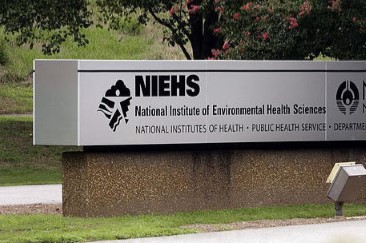Can cell phone radiation cause cancer? Yes, says NTP rat study
Source: NIEHS
The National Toxicology Program (NTP) of the U.S. Department of Health and Human Services concluded there is clear evidence that male rats exposed to high levels of radio frequency radiation (RFR) like that used in 2G and 3G cell phones developed cancerous heart tumors, according to final reports released today. There was also some evidence of tumors in the brain and adrenal glands of the exposed male rats.
„The original objective of the study was to test the assumption that nonionizing radiation – which radiofrequency radiation is – could not cause adverse health effects because it did not have enough energy to break chemical bonds. Well, we now know that that assumption is wrong because of the multiple effects that were identified in the NTP study.“
Update 21 Oct. 2019: NTP publishes study ‚Evaluation of the genotoxicity of cell phone radiofrequency radiation in male and female rats and mice following subchronic exposure‘: „In conclusion, these results suggest that exposure to RF radiation is associated with an increase in DNA damage.“
Heart and brain tumors
The $30 million NTP study took more than 10 years to complete and is one of the most comprehensive assessments to date of health effects in animals exposed to RFR.
The study found that exposure to high levels of RFR, like that used in 2G and 3G cell phones, was associated with:
- Clear evidence of tumors in the hearts of male rats. The tumors were malignant schwannomas.
- Some evidence of tumors in the brains of male rats. The tumors were malignant gliomas.
- Some evidence of tumors in the adrenal glands of male rats. The tumors were pheochromocytomas.
DNA damage
DNA damage was significantly increased:
- In the frontal cortex of male mice from either 3G or 2G cell phone radiation exposure.
- In peripheral leukocytes of female mice from 3G exposure.
- In the hippocampus of male rats from 3G exposure.
Male and female rats and mice were exposed to cell phone radiation at 1.5, 3, or 6 W/kg specific absorption rate (SAR) for 19 weeks from gestation day 5. The mice were exposed to radiation at 2.5, 5, or 10 W/kg SAR for 13 weeks from postnatal day 5.
DNA damage was assessed in three brain regions, in liver cells and in blood leukocytes using the comet assay method. Chromosomal damage was assessed in peripheral blood erythrocytes using the micronucleus assay.
The FDA called for this research in 1999.
The NTP will soon embark on a new phase of its long-running RF project. By the end of 2019 it will begin a systematic search for mechanisms to explain how and why the tumors developed. The research plan will include studies on gene expression, oxidative stress and DNA damage and repair.
Dr. Ronald Melnick, NTP study lead scientist
Ronald L Melnick, PhD presenting the results to the National Institutes of Health NTP study peer review:
Environmental Health Trust interviews Dr. Melnick to discuss the downplaying FDA response to the study findings:
Melnick: (16:03)
We were able to show in the NTP studies that the rats could tolerate six Watts per kilogram. The exposures that we were using in NTP studies were 1.5, 3 and 6 Watts per kilogram. So you can see that these are essentially the same or slightly higher than the 1.6 watt per kilogram, which is the FCC limit. So when you talk about what is high with respect to holding a cell phone and its antenna next to it head, the localized exposure is what is the important metric with respect to risk to that particular region. So if you hold the cell phone and at the antenna next to your head, that is the region that receives the most exposure, uh, the exposure to your knees and your feet will be a very minimal. So it’s that local exposure, which is the appropriate metric for understanding risk. In the NTP studies, a number of preliminary workups were done and demonstrated that under the conditions in which these exposures were conducted, the localized level in the brain was essentially the same as the whole body exposure level.
Melnick: (17:31)
So that the 6.3 and 1.45 watt per kilogram was essentially the same in the brain as the whole body exposure. And that then becomes the metric for understanding the disease outcome and human risk. So I would say 1.5 Watts per kilogram using the NTP study is at the permissible level. The acceptable level by the FCC for localized exposure, 6 Watts per kilogram is not that much higher. It’s a factor of four. In many cases, the levels of exposure from an animal study to a human study can be hundreds factor of a hundred, not four. So, but in the end, the important thing is to conduct the quantitative risk assessment because that’s what will tell us what is the relationship between exposure, which would be the intensity over time, uh, that leads to disease and work that relationship out to determine what is the risk under shorter terms of exposure or less exposure…
Melnick: (18:58)
… because a person, uh, may hold their phone away from their head and use it on speaker person who does that? Is that much less risk than a person who holds the phone right next to their head? As I mentioned, the doses typically are much higher because we can not detect risk at the level of 1%. A 1% risk, for example, if there’s a drinking water contaminant, if the risk was 1% that would be devastating. If 1% of the population developed a disease from a contaminant in their drinking water, that would be terrible. So what you try to do is expose to a higher level such that you can understand the risk at lower levels, and characterize it, and that’s what the quantitative risk assessment would do.
Melnick: (19:57)
My first message is the FDA needs to do their job. They asked for this study so that they could assess risks to human health. Now that the data is available, do that assessment and estimate what is the risk to human health? A small increase in cancer risk could have a serious health impact because of the millions and billions of people worldwide who use cell phones. But another lesson to be learned from this is that when this study began, the assumption was that non-ionizing radiation did not cause any adverse health effects other than by heating. We know that that assumption is wrong, so therefore it makes no sense to make assumptions about other types of wireless technologies unless they are tested and shown with adequate testing, to be safe. So the implementation of technologies such as 5G, uh, would be implemented under the assumption that it is safe. From the studies on the radio frequency radiation, we know that assumptions can frequently be wrong and for the protection of public health, these assumptions need to be tested.
Interviewer: (21:28)
Actually, uh, the, the FCC chair person and the commissioner just said that they had looked over the research and that the public health agencies had reviewed the research and that 5G was safe.
Melnick: (21:46)
Well, I’m not sure what research they’re looking at. Uh, but I, I know there have have been, well first of all, they haven’t even characterized 5G, they haven’t told us what are the frequencies, what are the power levels, what will be the human exposures to 5G. Uh, so not knowing what human exposures will be, it’s very hard to say that that is safe until that type of condition has been studied adequately in animal models, which can be predictive of human risks.
More sources
Environmental Health Trust: Statement of Ronald Melnick, NTP study lead scientist
Detailed coverage on Microwave News: Cell Phone Radiation Leads to Cancer, Says U.S. NTP in Final Report
The Wall Street Journal: Scientists find ‚clear evidence‘ cellphone radiation can cause cancer in rats





